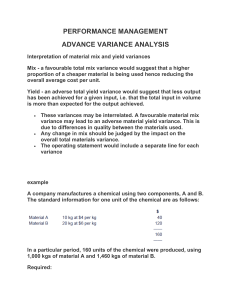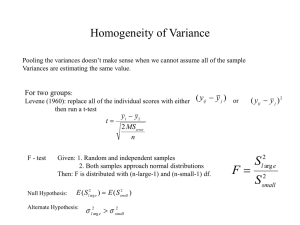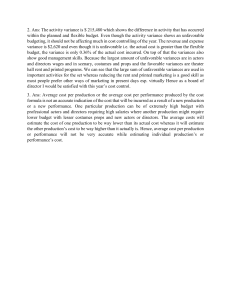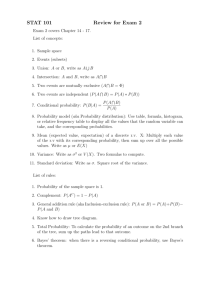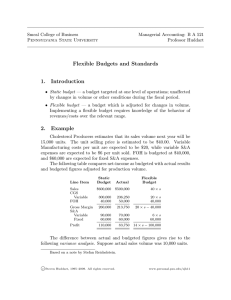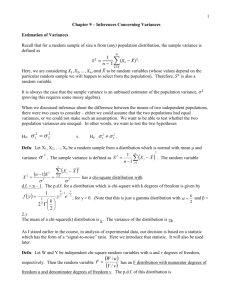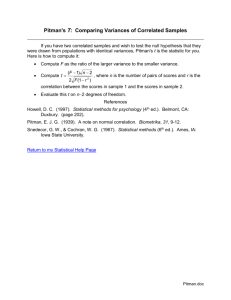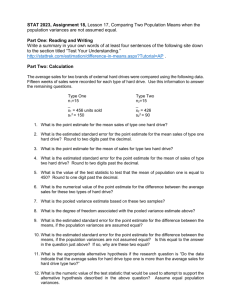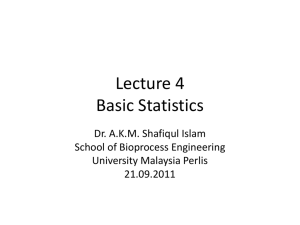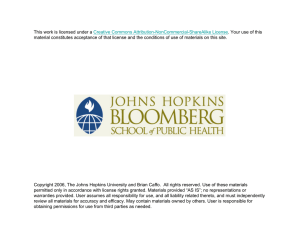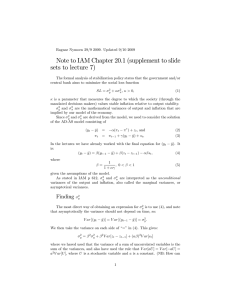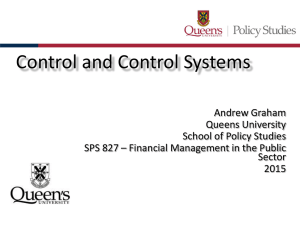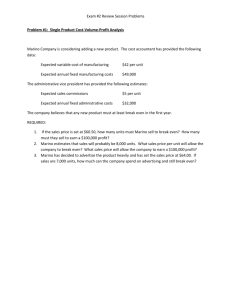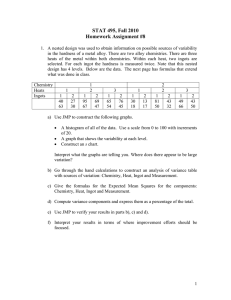2. Describe the similarities between an F
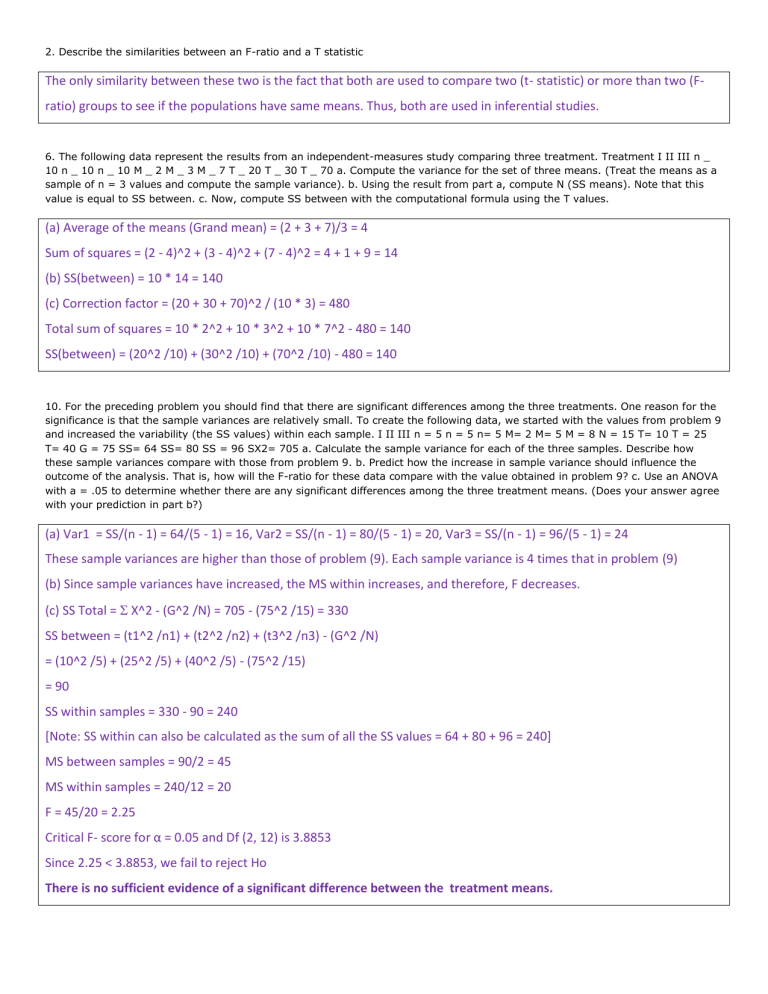
2. Describe the similarities between an F-ratio and a T statistic
The only similarity between these two is the fact that both are used to compare two (t- statistic) or more than two (F- ratio) groups to see if the populations have same means. Thus, both are used in inferential studies.
6. The following data represent the results from an independent-measures study comparing three treatment. Treatment I II III n _
10 n _ 10 n _ 10 M _ 2 M _ 3 M _ 7 T _ 20 T _ 30 T _ 70 a. Compute the variance for the set of three means. (Treat the means as a sample of n = 3 values and compute the sample variance). b. Using the result from part a, compute N (SS means). Note that this value is equal to SS between. c. Now, compute SS between with the computational formula using the T values.
(a) Average of the means (Grand mean) = (2 + 3 + 7)/3 = 4
Sum of squares = (2 - 4)^2 + (3 - 4)^2 + (7 - 4)^2 = 4 + 1 + 9 = 14
(b) SS(between) = 10 * 14 = 140
(c) Correction factor = (20 + 30 + 70)^2 / (10 * 3) = 480
Total sum of squares = 10 * 2^2 + 10 * 3^2 + 10 * 7^2 - 480 = 140
SS(between) = (20^2 /10) + (30^2 /10) + (70^2 /10) - 480 = 140
10. For the preceding problem you should find that there are significant differences among the three treatments. One reason for the significance is that the sample variances are relatively small. To create the following data, we started with the values from problem 9 and increased the variability (the SS values) within each sample. I II III n = 5 n = 5 n= 5 M= 2 M= 5 M = 8 N = 15 T= 10 T = 25
T= 40 G = 75 SS= 64 SS= 80 SS = 96 SX2= 705 a. Calculate the sample variance for each of the three samples. Describe how these sample variances compare with those from problem 9. b. Predict how the increase in sample variance should influence the outcome of the analysis. That is, how will the F-ratio for these data compare with the value obtained in problem 9? c. Use an ANOVA with a = .05 to determine whether there are any significant differences among the three treatment means. (Does your answer agree with your prediction in part b?)
(a) Var1 = SS/(n - 1) = 64/(5 - 1) = 16, Var2 = SS/(n - 1) = 80/(5 - 1) = 20, Var3 = SS/(n - 1) = 96/(5 - 1) = 24
These sample variances are higher than those of problem (9). Each sample variance is 4 times that in problem (9)
(b) Since sample variances have increased, the MS within increases, and therefore, F decreases.
(c) SS Total =
X^2 - (G^2 /N) = 705 - (75^2 /15) = 330
SS between = (t1^2 /n1) + (t2^2 /n2) + (t3^2 /n3) - (G^2 /N)
= (10^2 /5) + (25^2 /5) + (40^2 /5) - (75^2 /15)
= 90
SS within samples = 330 - 90 = 240
[Note: SS within can also be calculated as the sum of all the SS values = 64 + 80 + 96 = 240]
MS between samples = 90/2 = 45
MS within samples = 240/12 = 20
F = 45/20 = 2.25
Critical F- score for α = 0.05 and Df (2, 12) is 3.8853
Since 2.25 < 3.8853, we fail to reject Ho
There is no sufficient evidence of a significant difference between the treatment means.
6. A published report of a repeated –measures research study includes the following description of the statistical analysis. The results show significant differences among treatment conditions. F (2, 20) = 6, 10, P^.01 a. How many treatment conditions were compared in the study? b. How many individuals participated in the study?
(a) 2 + 1 = 3 treatment conditions were compared
(b) 2 + 20 + 1 = 23 individuals participated in the study.

